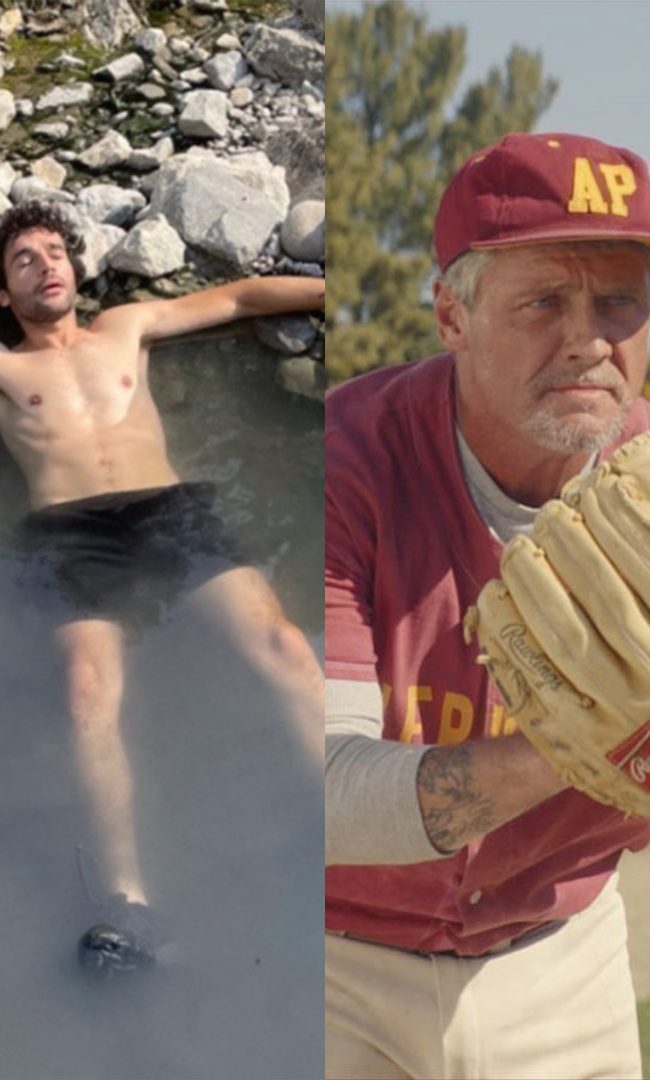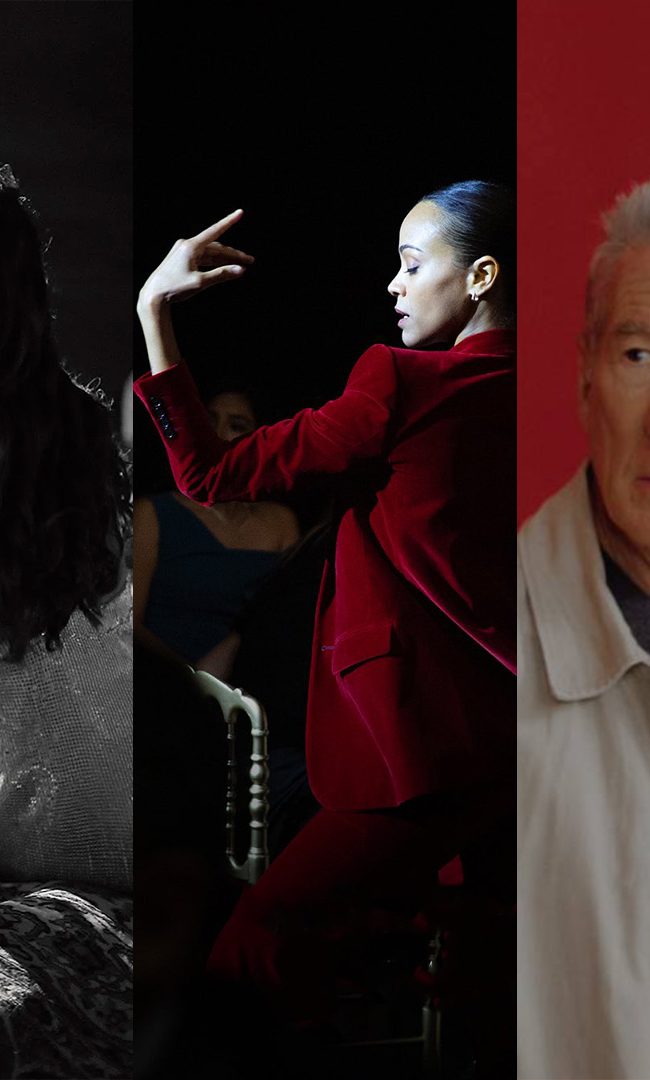A Conversation with Felipe Gálvez (THE SETTLERS)
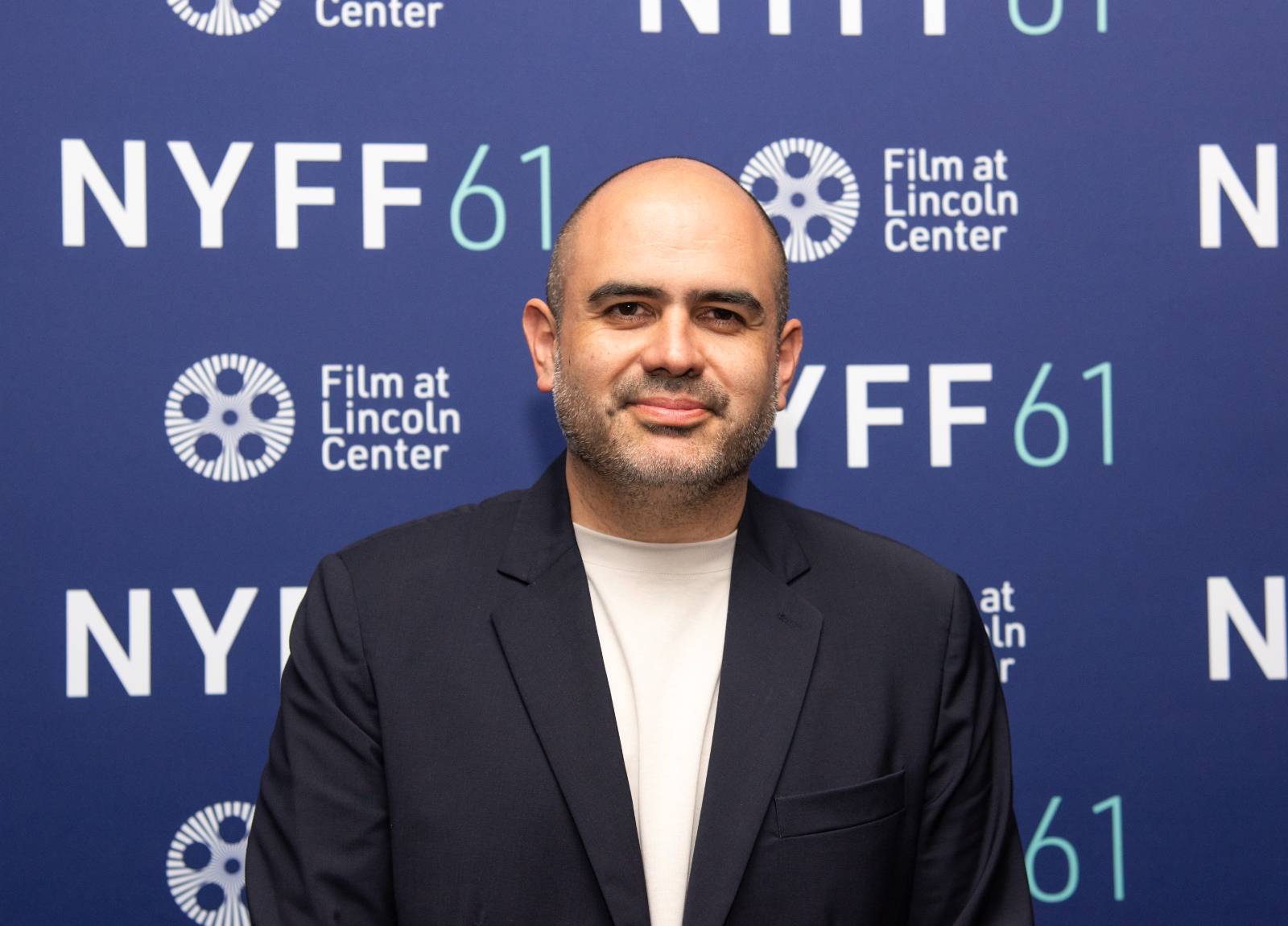
Felipe Gálvez has been working in the film industry for over 15 years. While this is his debut feature as a writer and director this is, not the first time he has worked on a feature film. For years he served as an editor on shorts and feature length films including Martin Rodriguez Redondo’s Marilyn. In 2017 he wrote the Iván Granovsky directed The Territories. In 2018 he shifted to the directing chair for the short film Raptor which he also wrote. In 2023, Felipe showcased his feature debut The Settlers, at the Cannes Film Festival in the Un Certin Regard category. The film took home the FIPRESCI Prize and has received resounding critical acclaim. The story is one that has rarely if ever been put to film. It is one of the best movies of 2023 and it was great to speak with Gálvez in the following conversation edited for length and clarity
Hammer To Nail: Mr. Gálvez, thank you so much for taking the time to speak with me today. I think the film is terrific. You have written and directed some short films in the past and served as an editor and screenwriter on feature length projects. What was it about this story that made you relinquish editing duties and come back to the directing chair for a feature length project?
Felipe Gálvez: The truth is, when I finished my studies, I always wanted to be a director. I went into editing because at first I did not like being on set. I thought that working as an editor and so closely with the director would be a great way for me to continue learning more about cinema and creating films. When I finished my studies I did not know what kind of director I wanted to be. It gave me time to figure out the type of stories I wanted to tell. The last of my short films most reflects the path I decided to take.
HTN: For this film, You and cinematographer Simone Darcangelo created a very distinct visual style with this film. What were you guys going for with the look?
FG: From the beginning we decided we would reference a lot of autochrome projects specifically from the Lumiere Brothers. They were some of the first people to experiment with color. Their images looked almost painted. Simone worked very hard. He would take this chromatic essence and transform it to what would look like painted images. The film begins in a very picturesque way with all of these colors. As the film goes on it transitions closer to these types of photos and images with the chromatic errors. The film mutates. It is meant to reference this photography of the 20th century. This was important to me because I did not want to make a realistic film. I did not want people to think that this is a kind of document they could reference. I always wanted to make an artificial film in that sense. The colors, the sounds, the music, it is all meant to evoke this artificiality. What I wanted to show is how cinema and film can distort reality through image.
HTN: What was your screenwriting process like for this film? Antonia Girardi and Mariano Llinas are also credited.
FG: I wrote the script with Antonia. We researched crimes that were committed at Tierra del Fuego. The idea was to delineate the story. We wanted to take on the viewpoint of the people who committed the crimes. We started with the script and then we researched. It was not that the script came out of 7 years of research. It was really the other way around. We had the script and then we researched what interested us in relation to the script. Mariano is a director for many Argentinian films. He did a film called The Flower which is a 15 hour feature. He also co wrote the script for 1985. He is really an incredible collaborator. There was so much to learn from him. I was with him throughout the majority of the process. He would always question us and offer potential solutions when we could not. This was our first film so it became a very didactic process. Mariano was certainly a collaborator but even more than that he was a teacher.
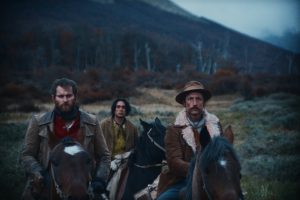
A Still from The Settlers
HTN: The film is dealing with very serious subject matter. I am wondering what the feeling on a set like this is. Is the work extremely serious day in and day out or are their moments for levity on your set. Also how long did you guys have to shoot?
FG: It took us a long time to find financing for the film. We ended up shooting for about 4 and a half weeks in a location where the weather was insane. We did not have the budget to be there any more so we needed everything to work perfectly. It was a very extreme shooting scenario. We were very anxious as to what we would be able to accomplish. We woke up early every morning to see what the weather would permit.
Even though we had the script, I was open to changing it based on what nature would allow. Being there was very difficult. The night scenes were below freezing and there was lots of wind. Overall, the set had good vibes because there was commitment. We all believed in what we were doing. I did not care about the conditions because it was my movie. It was beautiful to see everyone on the same page believing in the work as much as me. In that sense we had a great time shooting despite the difficult environment. The team knew that it was over 10 years in the making so they understood how hard headed I was about it having waited all this time. On the otherside we also knew we were telling a story about a genocide that had never been told before. It is possible that a story like this will not exist besides ours. I hope this can inspire similar stories. We all thought that it was worth it. More than it being important, we felt that it was worth the extra effort, freezing to death, working until late, going in the freezing water naked. When I was trying to convince the actors to go into the water naked I approached the water and put my hand in to show them that it is ok. When I put my hand in the water it did not feel that cold, however, right when I pulled it out the wind burned my hand and yet, they did it anyway, they went right into the water. There was a lot of honesty and sincerity on set, I never told them this would be comfortable. We knew this would be difficult and it would not be fun in a traditional sense.
HTN: All of that really comes through in the movie, There is a sequence early on that I think in retrospect is interesting to think about. First Mark Stanley says “you are not supposed to eat fish on a trip like this.” The moment continues with Camilo saying that, “Problems happen when they don’t want to learn from the priests and when they have their own god.” This is followed up by Mark Stanley saying, “Who the fuck was talking to you.” What was your thinking behind this moment, why was it essential to this film which has a tight run time?
FG: The scene has more to do with showcasing our characters. Camilo (Sam Spruell) is a man of the sea, he wants to eat fish. I am really trying to show how uncomfortable it is for Bill (Benjamin Westfall). He is very worried about roaming these natives’ land without proper preparation. So even though the sequence is framed around that exchange, it is really more having to do with Bill and his worries. I also think it is important to see how Camilo understands what they are talking about. We can also see Mark’s predictability. When he first hires Camilo, you think that maybe he will serve as a kind of father figure for the man. But then, with the exchange, you can see how predictable he is. In this sequence we are also introduced to the competitive tension between these men. Camilo bringing up god is meant to be proof he is a catholic, Mark’s response shows that he has a different relationship to god. Lastly, I was actually trying to do some humor. They are talking about stupid things. I regret that Mark was not making potatoes as well because that speaks to the idea of a very english meal, you know, like fish and chips. Maybe the scene came out much more serious than I intended haha.
HTN: I find the third act fascinating, the film switches to something more dialogue driven, talk about your thinking behind these last 40 minutes and ending the film on Mishelle’s (Mishell Guaña) face.
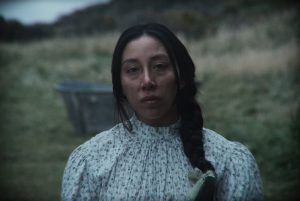
Mishell Guaña, THE SETTLERS
FG: In the first version of the script there was only that first part. I felt that there was something missing. Some kind of reflection that was not there. I did not want to make a film simply about violence. We added that second part to negate that first part. The first part is all about physical violence while the second part is all about verbal violence. Our method of working was double or nothing. If we were going to go one step we would have to take two steps. We needed to show that second type of violence which is that of erasure. The last scene focuses in on her face and it zooms in so close you can see her pours. The film begins with very wide shots of the surrounding environment and it ends with the skin which is also a source of conflict. The first time we shot this moment I noticed how excited the whole film crew was. From the very beginning we knew this was a strong shot.
HTN: Thank you so much for speaking with me today. The film is terrific.
FG: Thank you!
– Jack Schenker (@YUNGOCUPOTIS)








